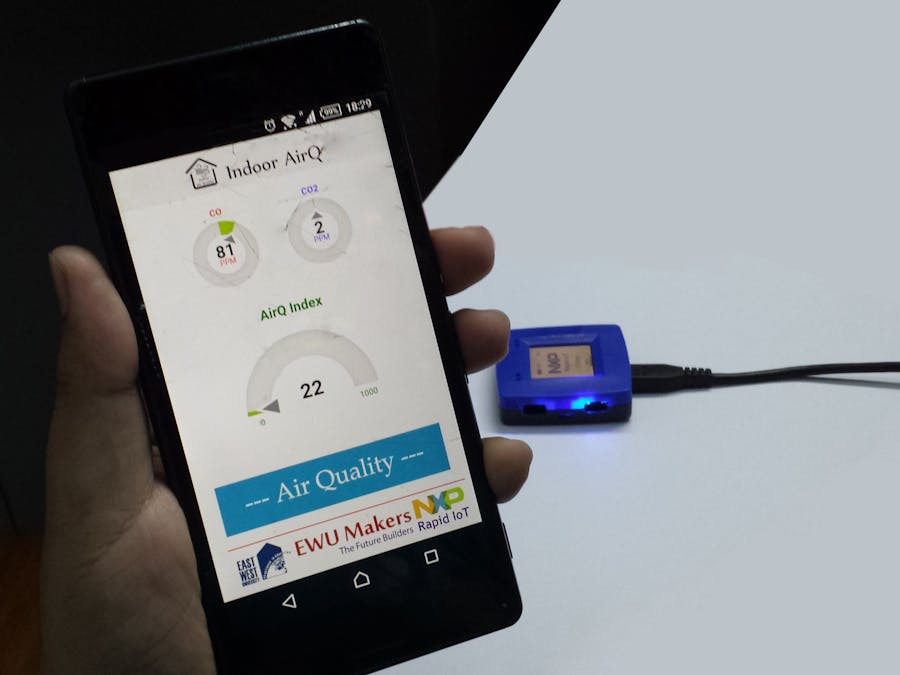Indoor air pollution has been consistently ranked by the US Environmental Protection Agency (EPA) and its Science Advisory Board to be among the top five environmental public health risks. Average person spends an estimated 90% of their time indoors so that poor indoor air quality (IAQ) poses a substantial risk to public health. Poor air quality may cause increased short-term health problems such as fatigue and nausea as well as chronic respiratory diseases, heart disease, and lung cancer. It is estimated that annual costs and productivity losses in US is $10 to $20 billion related to sick building syndrome, which is defined to describe acute health and discomfort effects that appear to be linked to poor indoor air quality and the time spent in a building.
In this project, we are going to present an indoor air quality monitoring system. Our system is connected to the Internet, and as a result, anyone can remotely visualize the air quality index form anywhere.
we used NXP online IDE for developing the application. A step by step manuals for application development as well as flashing the device is available on NXP website. We have also developed a mobile application for visualizing the air quality information. For programming the raspberry pi is done by python.
- Homes and offices
- Industries
- Remote sensing for firefighters
- Research and agriculture
- Hospital and clinic
- ICU unit
- US Environmental Protection Agency (USEPA). Indoor air quality tools for schools Communications guide. Available at http://www.epa.gov.
- H.S. Brightman and N. Moss. Sick building syndrome studies and the compilation of normative and comparative values. Indoor Air Quality Handbook. Editors: J. D. Spengler, J. F. McCarthy, and J. M. Samet, New York: McGraw-Hill, 2001.
- J.-J. Kim, S.K. Jung, and J.T. Kim.Wireless monitoring of indoor air quality by a sensor network. Indoor and Built Environment, 19:1:145-150, 2010.
















Comments
Please log in or sign up to comment.